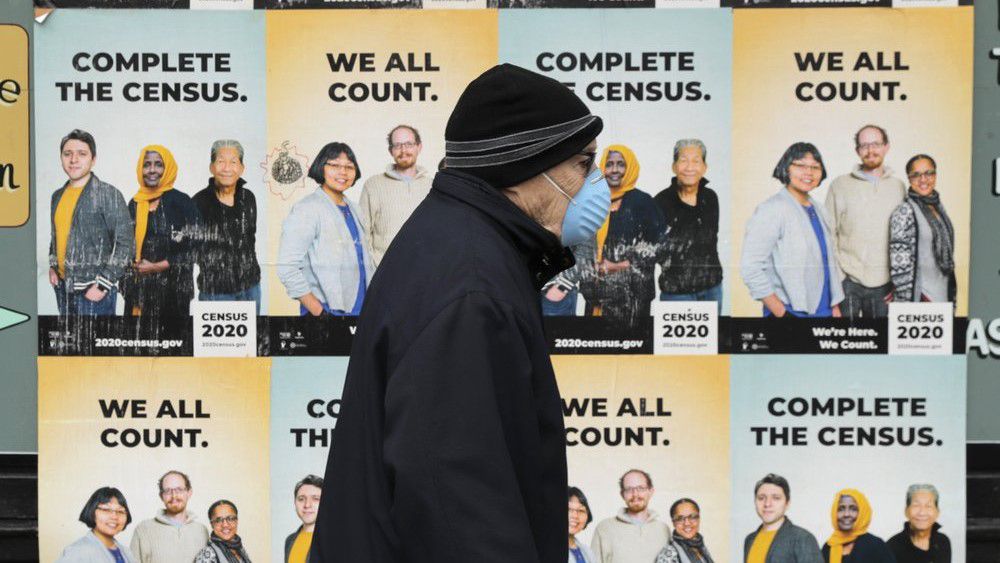Stymied by delayed census data needed for redistricting, some states are considering postponing their 2022 primaries or turning to other population estimates to start the once-a-decade task of redrawing voting districts used for U.S. House and state legislative elections.
The U.S. Census Bureau was supposed to provide redistricting data to the states by March 31, but after setbacks from the pandemic, it won’t be ready until mid- to late August and might not be available in an easy-to-use format until Sept. 30. That’s later than the legal deadlines to complete redistricting in some states and could mean less time for court challenges, candidate filing and ballot creation.
The delay has sent states scrambling to adapt. Some face the decision to sidestep their constitutional deadlines or draw stopgap maps that might not fully reflect population shifts in the past decade.
“States that have done the exact same thing for decades in a row now have to look for alternatives,” said Wendy Underhill, director of elections and redistricting at the National Conference of State Legislatures.
In many states, redistricting is done by lawmakers subject to a gubernatorial veto. A growing number will use independent or bipartisan commissions, but Republicans will have ultimate control over redistricting in more than twice as many states as Democrats. Political control allows officials to draw districts that make it easier for their candidates to win future elections — something Republicans did more effectively than Democrats after the 2010 census.
Although the census is typically used for redistricting, only about half the states have laws or constitutional provisions explicitly requiring them to use census data, according to the NCSL.
In Oregon, the state constitution requires lawmakers to draw legislative districts “according to population” by July 1. If they fail to do so, then the secretary of state is to complete maps by Aug. 15.
Democratic legislative leaders cited “constitutional turmoil” caused by late census data in asking the state Supreme Court to extend redistricting deadlines until three months after the figures are received. But Secretary of State Shemia Fagan, a Democrat, contends that could trigger a chain reaction that could delay the state’s May 2022 primaries.
“The resulting cost, confusion, and instability to Oregon’s electoral process could be staggering,” Attorney General Ellen Rosenblum argued in a court filing on Fagan’s behalf.
Fagan suggests the Legislature could use population estimates from Portland State University to draft maps by the constitutional deadline and revise them during a likely legal challenge as the 2020 census data becomes available. Officials at the university’s Population Research Center told The Associated Press that their statewide estimates were off by just 0.2% — fewer than 8,000 people — during the 2010 census.
The Oklahoma Constitution requires the Legislature to redraw its districts within 90 working days of starting its regular session. With the clock ticking, lawmakers have decided to use population estimates from 2015 to 2019 to redraw legislative maps. After the 2020 census data is released, the Legislature may reconvene in a special session if adjustments are needed.
“There’s an awful lot you can do with the data that are already available to start on a rough sketch” for redistricting, said Justin Levitt, a professor at Loyola Law School in Los Angeles who specializes in redistricting.
But relying on anything other than 2020 census data for the final maps poses a “substantial legal risk,” Levitt said.
Lawsuits over redistricting are a near certainty in many states as political parties angle to get preferential maps. A decade ago, courts twice delayed the Texas primaries because of legal challenges to the maps drawn by the Republican-led Legislature.
Candidate filing for Texas’ March 1 primary is scheduled to run from mid-November to mid-December. But Republican Rep. Phil King is sponsoring legislation that would allow the governor, lieutenant governor and House speaker to agree to delay the primaries to as late as July 1.
If census data isn’t received until September, “it gets pretty tight,” King said. “This is just a safety net in case we have to back it up a little bit.”
North Carolina’s top elections administrator wants lawmakers to postpone November municipal elections and March 2022 primaries. But Key Republican lawmakers say it’s too soon to know whether that’s necessary. Only about 60 of the hundreds of municipalities will need to redraw wards or districts.
“There are elections that are affected by the census and there’s elections that aren’t,” said Republican Sen. Warren Daniel, co-chairman of the Senate Redistricting and Elections Committee. “Personally, I think we should distinguish between the two in terms of what our action is.”
The California Supreme Court already has pushed back the deadline for the state’s redistricting commission to finalize new maps from Aug. 15 to Dec. 15.
But that was on the assumption census data would be available by July 31. For every day the data is delayed beyond that, the court has automatically extended the deadline by an equal amount. That means it could bump up against California’s mid-February deadline for candidates to submit petitions for the 2022 primaries.
“Things are going to have to change,” said Paul Mitchell, a redistricting consultant based in Sacramento. “It would be impossible for them to collect signatures when they don’t know what the lines are.”
It’s not just potential candidates who are affected by the delayed census data. Election administrators need time to align new districts into voting precincts so each voter gets a ballot listing the correct candidates. And officials need to get that done early enough to mail ballots to military and overseas voters at least 45 days before an election.
“All these things, they’re all asking for time, and it’s all just getting crazy compressed because of this late census data,” Mitchell said.



